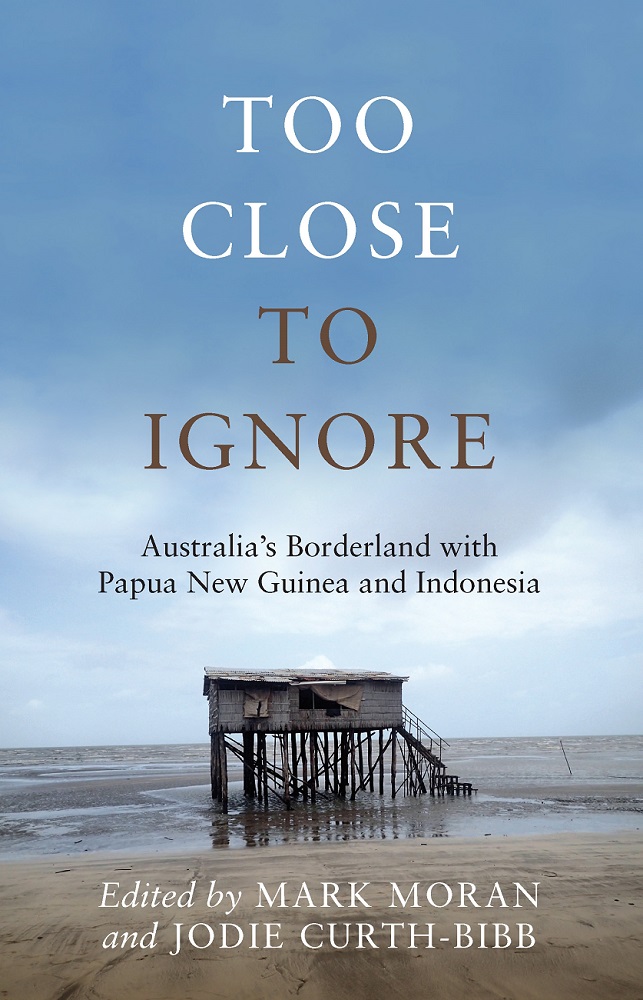Book Review: Too Close to Ignore: Australia’s Borderland with Papua New Guinea and Indonesia

Proximity matters, and so too do acute political and socioeconomic inequalities. These are the twin premises of this fascinating collection of essays on Australia’s borderland with Papua New Guinea (PNG) and Indonesia in Torres Strait.
The land borders in this area owe much to British and Dutch colonialism, with Britain’s self-governing colony of Queensland laying claim in the 1870s to three islands in close proximity to the southern coast of mainland PNG, which Britain then claimed as a protectorate in 1884. The Dutch, over a century before, had already claimed the western portion of Papua to 141E. While the borderland proximity matters dealt with in this book build from this colonial heritage, they are also a product of the period since 1975, when PNG gained independence from Australia and became a sovereign nation-state.
Adjustment of the colonial borders was contemplated in the 1970s but proved impossible. Instead ideas for a slightly porous, multi-dimensional border were developed. These ideas were incorporated in the Torres Strait Treaty between Australia and PNG, signed in 1978 and ratified in 1985. The treaty identified separate seabed and fisheries jurisdiction lines, as well as the island-based land border. And it created a cross-border “protected zone,” within which “traditional inhabitants” could continue to move freely “for or in the course of traditional activities.”
The Treaty’s porous border recognised movement between Papua and Torres Strait in colonial times and before and tried to accommodate that movement into a future of proximate nation-states. But there was, even at the time of the treaty’s signing, a hardness introduced. In chapter two of Too Close to Ignore, edited by Mark Moran and Jodie Curth-Bibb, Murphy informs us that in 1978, while Papuans with more than five years residence in Torres Strait were allowed to stay and become Australian citizens, 100 others were “sent back to PNG.” The drawing of some fine categorical distinctions and hard lines was thus beginning and has continued since. In a wonderfully rich essay, Murphy informs us that from 1985 to 2000, little effort was made to define and enforce the category of “traditional inhabitants.” But from 2000 that changed, with traditional inhabitants restricted to a list of villages or communities on either side of the border and the introduction of a “pass” system. Murphy also introduces us to the history of the Indonesian border since 1969, which seems to be increasing in porosity over time.
A common thread through this collection of essays is that the interpretation of key terms in the Treaty between Australia and PNG has hardened the border since 1985, rather than maintaining its porosity. On the Papuan side, the category of “traditional inhabitants” has become restricted to the residents of 14 coastal villages, despite the claims of others from places further afield of having traditional links into Torres Strait. The interpretation of “traditional activities” has also been restrictive, particularly in relation to what constitutes “barter and market trade.” In chapter three, Corrin gives a thorough legal overview and traces some of these restrictive interpretations to soft law guidelines “introduced in 2009 and revised in 2011.” While she suggests that the guidelines may be challengeable in law, her survey of dispute resolution options and ways of obtaining legal advice and representation does not give great hope for doing so. The guidelines, she argues, are “more influential in the practical application of the treaty than the hard law.” Another interesting observation is that the guidelines were an initiative of the Traditional Inhabitants Meeting, a mechanism established by the Treaty drawing in traditional inhabitants from both countries.
Corrin’s legal view is reinforced by Chaudry’s political economy in chapter four. He suggests that inequalities across the borderland have become starker since the 1980s, with considerable Australian government investment in the islands of Torres Strait combined with very little investment in the South Fly District by the PNG government. On the Papuan side, there are also significant inequalities between the residents of treaty villages, who are recognised by Australia as having some cross-border rights, and those with none. As one of Chaudry’s informants put it: “Haves are people who got a generator from their relatives in Torres Strait Islands, so haves are people who have relatives and connections over there.”
Chaudry goes on to observe that the “Torres Strait Islanders and Treaty villagers guard their privileges carefully, even while complaining that they are excluded from opportunities that others enjoy.” He also notes that the treaty villages have recently emerged as a separate local government which hopes to connect directly with Australian aid earmarked for treaty villages and to “demand a ‘rightful share’ from the former colonial power.”
Later essays delve more deeply into particular sectoral subjects, but always with acute inequalities across the border being a matter of concern. In chapter six, Miller looks at health issues, including tuberculosis and other communicable diseases. Through clinics on Saibai and Boigu, Queensland Health worked extensively on tuberculosis among Papuans from 2000 to 2011. But then a change of approach emerged in which Australian Aid for tuberculosis was directed across the border through Daru General Hospital at the eastern end of the South Fly region. The limited accessibility of Daru from Treaty villages means that several hundred Papuans still seek health services in Torres Strait each year when crossing the border for traditional activities.
Fisheries is the focus of an essay by Busilacchi, Murphy, and Butler in chapter seven. Their theme is that the hardening of the border between Australia and PNG has encouraged fishers of the South Fly to look more to the town of Merauke, across the Indonesian border to the west, for trading opportunities. This border to the west now seems more permissive of trade than the Australian border to the south.
Chapter eight is also an essay on the adverse effects of the Ok Tedi mine on the Fly River by Busilacchi, Curth-Bibb, and Butler. This is seen as driving the immigration of Fly River people downstream to the island of Daru on the southern edge of the delta or mouth. The growth of Daru is seen in turn as placing pressure on marine resources further south towards the Australian fisheries jurisdiction line. So, this essay too develops a focus on fisheries resources.
A rather different essay by Hitchcock in chapter nine focuses on a fifteen-year project undertaken by the World Wildlife Fund for Nature in the low-lying, tropical savannah wetlands of the Tonda Wildlife Management Area at the western end of the South Fly coast, up against the Indonesian border. Hitchcock labels the program an Integrated Conservation and Development experiment and recounts how it came to an end in 2010 due to the different perceptions and interests of the WWF and local residents. For the WWF, Tonda was part of a major wetland conservation initiative across three nation states. But the local Tonda residents wanted more help from the WWF with services and development opportunities, rather than a conservation project. This perspective of Tonda residents reflected, in turn, the lack of capacity of the PNG state in this outlying borderland. Hitchcock notes other documented instances of poor engagement between international conservation NGOs and local people in Melanesia, and he does not hold out much hope for anything different in the future.
In his conclusion, Moran, one of the editors, wants to be quite prescriptive and directive. He wants the hardening “securitisation” of the borders in this region in recent years to be reversed, and the 1970s treaty vision of a porous border to be revisited. He wants the “Guidelines for Traditional Visitors” dating from 2011 to be reviewed and softened, first around the issue of barter and trade as “traditional activities,” and second around who are the “traditional inhabitants” allowed to engage in these activities. Moran sees reinterpretation of these key terms in the treaty as opening trading opportunities in the borderlands, which could in turn lessen the acute political and socioeconomic inequalities that have developed in such close proximity. This more liberal vision pushes against the tide of recent history in arguing that border security will flow from lessening acute inequalities across the borderland, not heightening them. This is a powerful closing premise for a fascinating collection of essays.
The editors and contributors are to be congratulated on a lively collection which pushes against the tide. Different disciplinary perspectives add greatly to the depth of this collection, while the editors have also worked hard to create coherent themes. Acute political and socioeconomic inequalities across these borderlands are being ignored, or not given the attention they warrant. Perhaps this collection can contribute to changing that disturbing reality.
This is a review of Mark Moran and Jodie Curth-Bibb (eds.) Too Close to Ignore: Australia’s Borderland with PNG and Indonesia (Melbourne University Press, 2020) ISBN: 9780522875478.
This article is published under a Creative Commons License and may be republished with attribution.





